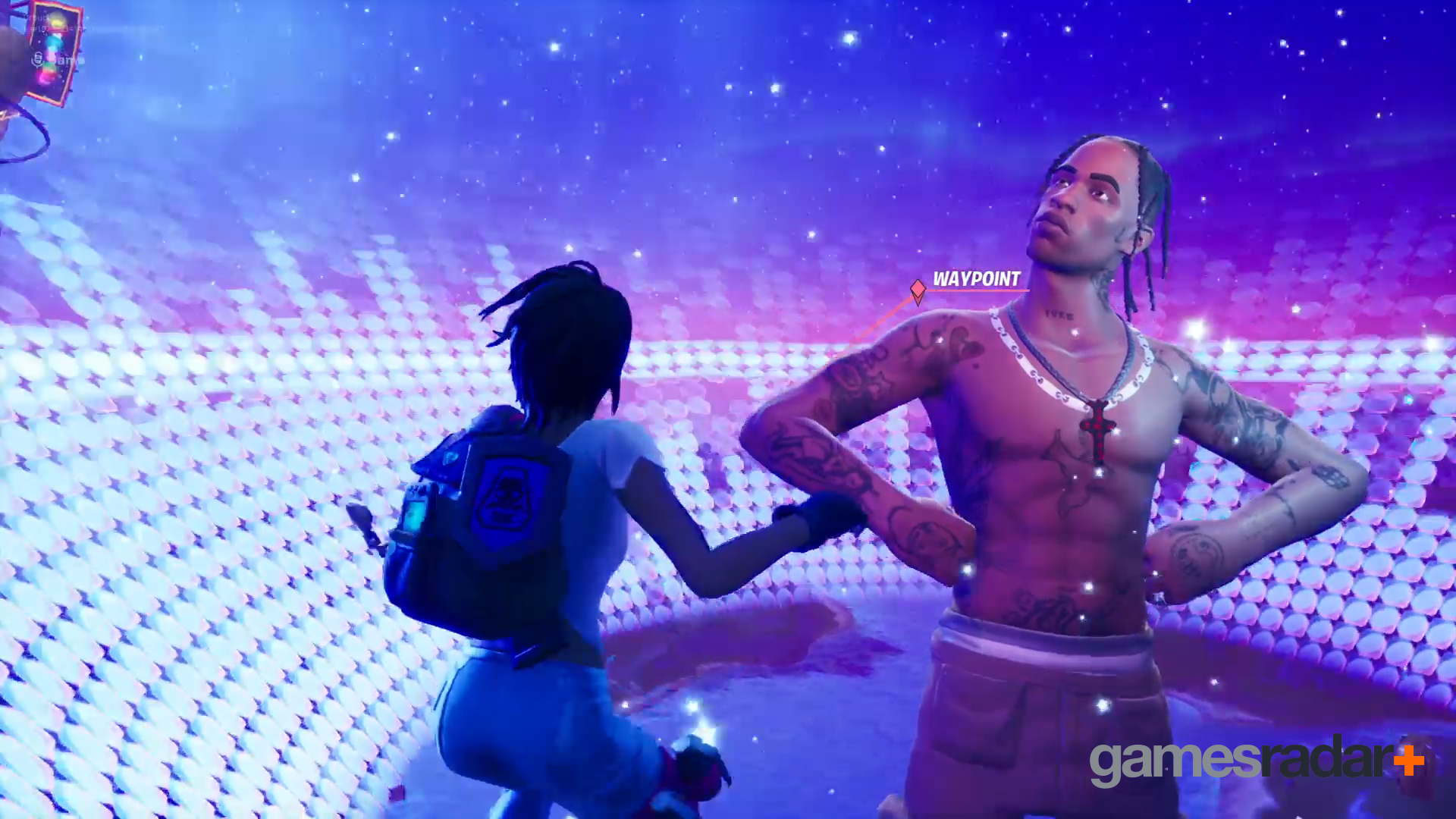What Fortnite's amorphic map says about live events and pop culture crossovers
I've returned to Fortnite and have fallen in love with its evolving map
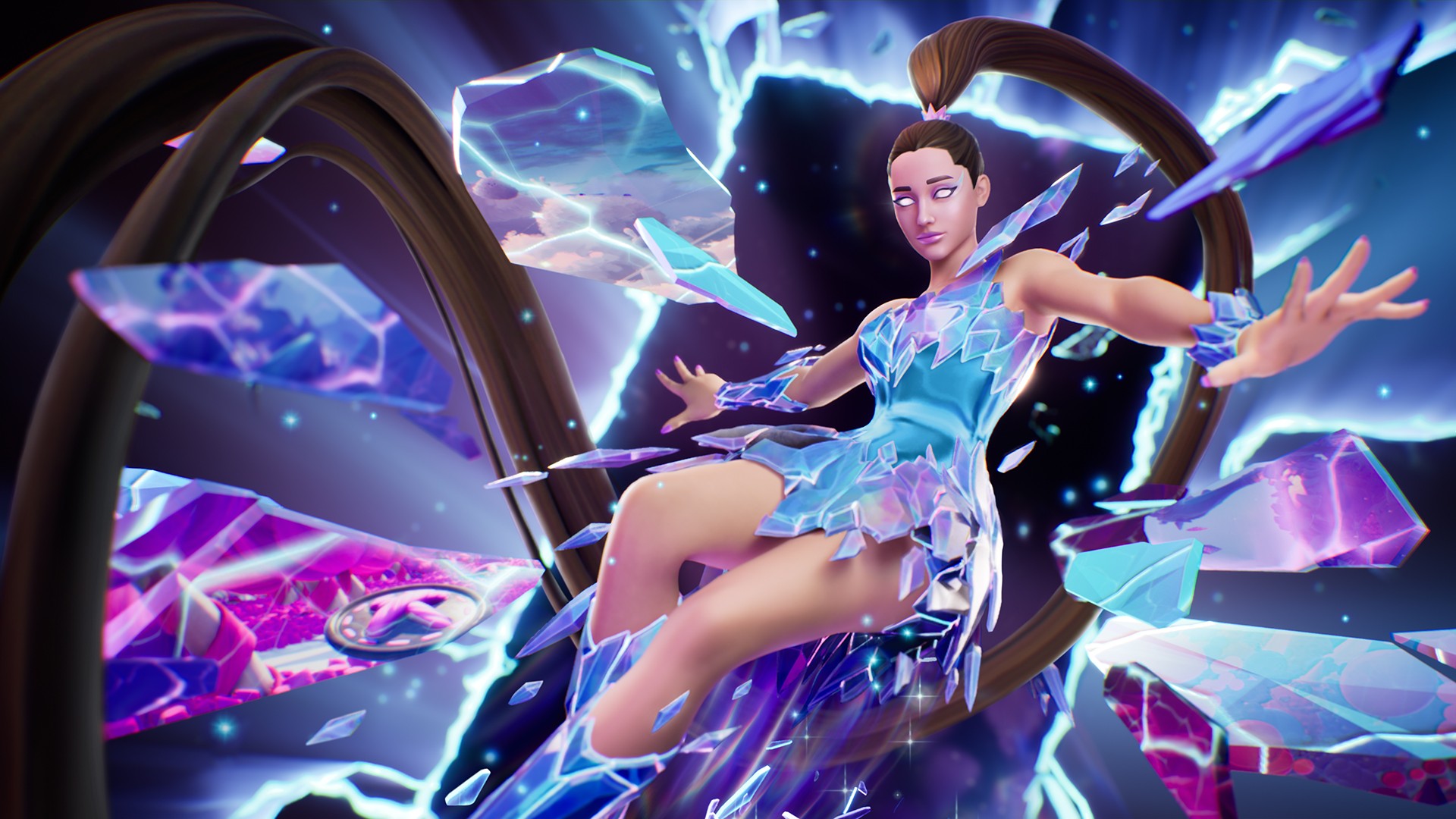
When Travis Scott began plucking stars from the twinkling Fortnite sky my heart skipped a beat. We're hardly out of the woods amid the ongoing global pandemic, but at the tail end of April 2020, quarantine restrictions had halted foreign travel. Enforced lockdowns had shuttered the hospitality industry overnight, and had cancelled live music events en masse across the globe. Here in the UK, we were advised to leave our homes for just one single hour each day. And yet, here was an oversized, gamified Cactus Jack performing in our living rooms, dropping new music, sporting his iconic mocha and white Air Jordan 1 sneakers – pink laces, backwards swooshes and all.
The self-proclaimed 'highest in the room' featured in Fortnite's Astronomical event – a limited-time exhibition shared between Epic's battle royale juggernaut and La Flame himself – which saw the US rap star dancing over the map's Sweaty Sands to the beat of Sicko Mode, Goosebumps, and The Scotts among other tracks from his head-bobbing, chart-topping repertoire. As players skipped around the singer's feet, the whole thing was larger than life, and felt like a watershed moment for video game live events and their penchant for pop culture crossovers. The unsung hero of this blockbuster spectacle? Fortnite's map itself.
Building something
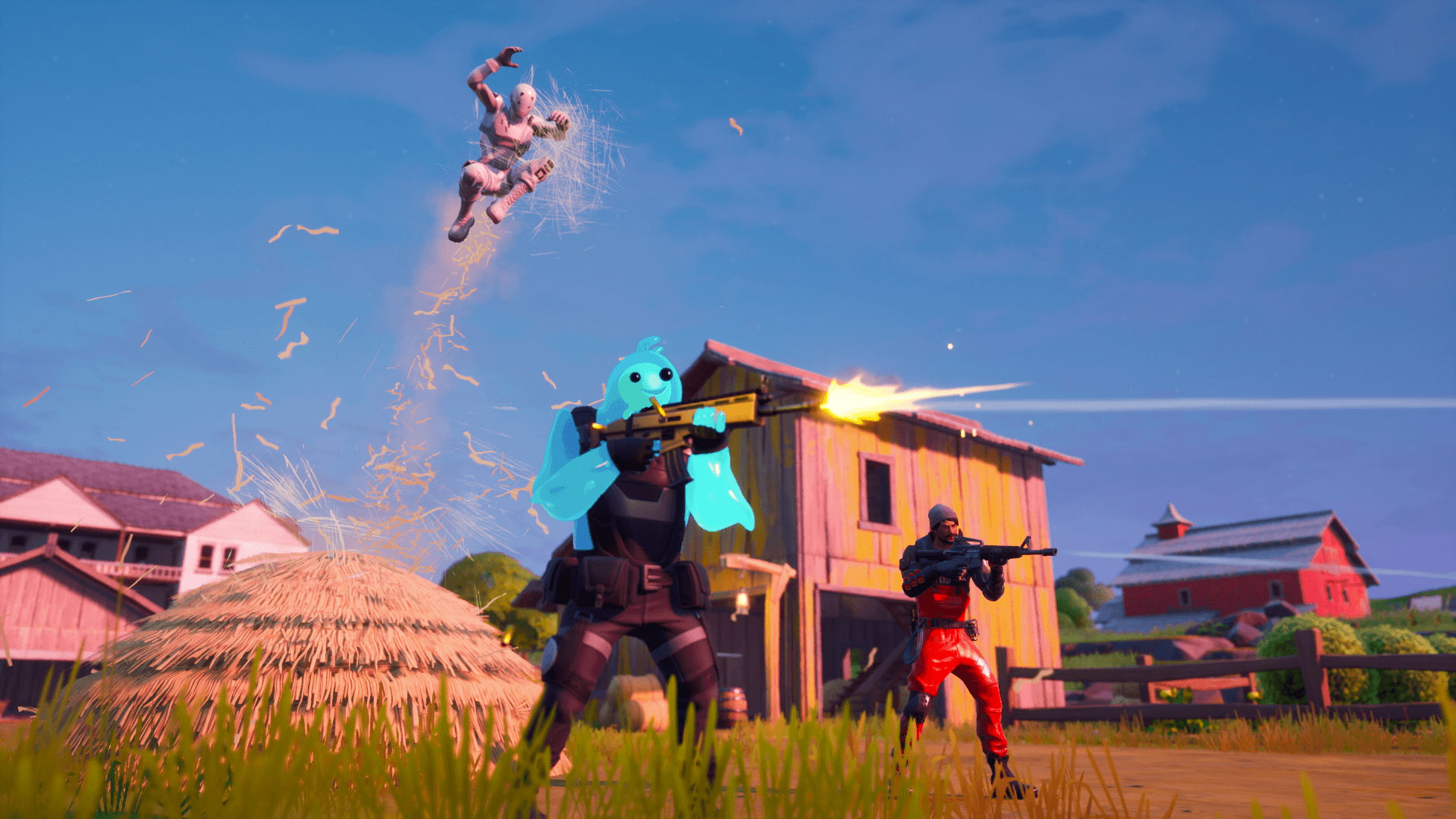
When I first played Fortnite Battle Royale in late 2017, I didn't get it. I preferred PUBG's more realistic slant on the incipient genre that's since spawned countless clones, and Erangel – PUBG's first and, at that point, standalone map – felt more cohesive and credible. Once I'd gotten my head around Fortnite's building mechanics, though, I began to like it. Once that comet fell from the sky in Chapter 1, Season 4, better still, I fell in love. And, like the millions upon millions of players who've since boarded the battle bus, I was hooked. Rest in peace, OG Dusty Depot.
Besides prompting a boom in the battle royale's player count, the significance of that meteor shower on May 1, 2018 to the wider Fortnite ecosystem cannot be underplayed. The arrival of Dusty Divot (the crater that levelled Dusty Depot) marked the beginning of Fortnite's twisting, turning, detective board-demanding story in earnest – a tale which would go on to span multiple timelines, alternate realities, and comprise warring factions and scheming in-game governments. Now three chapters and an accumulative 18 seasons-deep, keeping up with that outlandish storyline is no easy feat.
Since 2018, there have been more high-profile crossovers and collaborations than I've had hot dinners, and disrupting the space-time continuum appears as commonplace now as Michael Buble at Christmas. The birth of my son in late 2020 caused me to step away from Fortnite almost entirely, and, having returned over the last few weeks, I'm slowly but surely piecing together everything I've missed.
Without a doubt, my single favourite thing about my second coming so far is Fortnite's constantly evolving map – a crowning feature that I don't think has ever received enough credit, particularly against other live-service games.
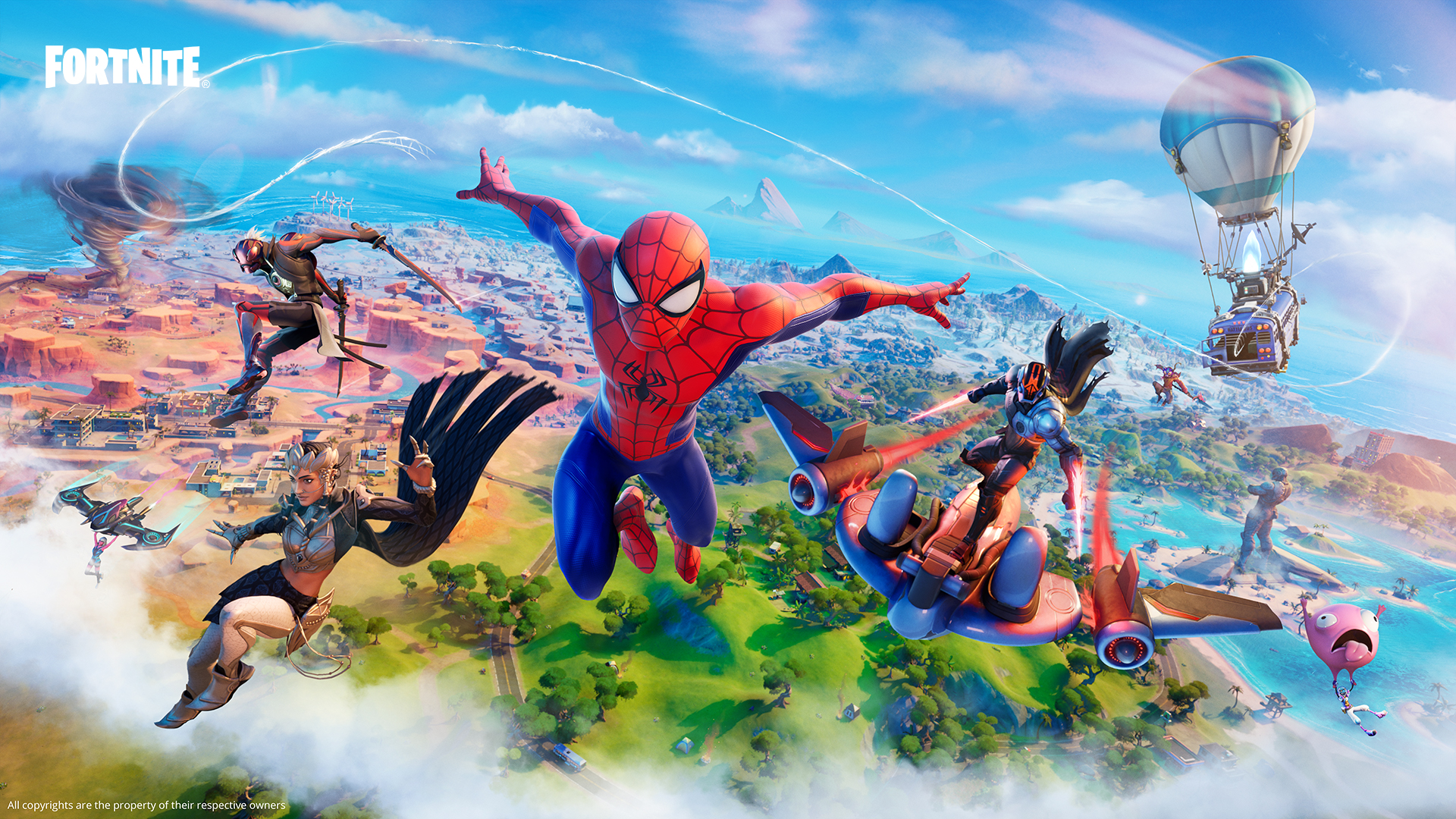
"I've become acutely aware of how great Fortnite's map is as a returning player, something I'm certain will apply to others considering retracing their steps on the island in 2022."
The fact that Fortnite has only ever offered players one map is impressive. It hardly looks the same today as it did in 2017, granted – it's undergone umpteen facelifts in the intervening years, including a trip through a black hole and, most recently, a cataclysmic event that turned everything on its head – but that's to its credit. Given the fact its solo and squad-based bouts of battle royale run for around 20 minutes at a time, players don't get the chance to explore freely for very long. In battle royale, exploration is ultimately determined by the direction of the shrinking storm and where it winds up. To have a sandbox that's constantly evolving and morphing, then, means players are forced to adapt their approach, playstyle, preferred starting point and tactics with each passing chapter, sometimes with each passing season.
Sign up to the GamesRadar+ Newsletter
Weekly digests, tales from the communities you love, and more
Looking elsewhere, Apex Legends' characters and their bespoke abilities drive its charm, and while Respawn and EA have spent some time implementing player feedback and adjusting existing maps, the hero-meets-battle royale shooter has typically introduced new maps over time, each designed to suit the game's speed and movement systems. The same applies to Call of Duty: Warzone, having spread itself over Verdansk (including Verdansk '84) and Caldera.
PUBG has been treated to eight maps since launch (plus two map remasters and one map overhaul), leveraging each new setting as a means of keeping things fresh in battle. Fortnite, on the other hand, riffs on self-awareness to avoid becoming stale. Whereas other games give players whole new archipelagos to plunder and pilfer, Fortnite tends to overhaul specific parts of its playground tied to its overarching central narrative, in turn preserving familiarity elsewhere.
Cult classic-turned-prodigal son Tilted Towers is probably the most prevalent example of this, but its playful background storylines are equally endearing – the Stone Family, Food Fight, Gnomes versus Bears, and the Golden Chair of Midas to name but a few – and speak volumes for the dynamism of the sandbox. None of this is news to the Fortnite aficionados among us, of course, but I've become acutely aware of it all as a returning player, something I'm certain will apply to others considering retracing their steps on the island in 2022.
Block-buster

"I can't help but wonder who'll challenge Fortnite's foothold in the video game live event space in the, hopefully, not too distant future."
The contained Cayo Perico island update aside, GTA Online has, of course, occupied its San Andreas sprawl exclusively since launch in 2013. And while it wouldn't make sense for it to evolve its faux-Los Angeles map in the same fantastical ways Fortnite has, one consistent bugbear of its players is how little the crime simulator's sandbox has grown and expanded over time. The Diamond Casino resort marks the game's biggest development in landmark terms – the old casino having been reworked in 2019 – and while nightclubs, arcades and luxury office spaces have been integrated as hubs to kick off specific heists and business ventures, a running joke among the GTA Online community is how long the building site at Alta Street and Occupation Avenue has been in operation without obvious progress.
Despite their obvious differences in mechanical terms, clear parallels can be drawn between Fortnite's blockbuster crossovers and GTA Online's – not least the superstar DJ roster of the latter's After Hours update in 2018, and the Dr Dre-starring The Contract of last year. In Fortnite, Ariana Grande has since followed Travis Scott with her Rift Tour in 2021, with Spider-Man, the Flash, Horizon Zero Dawn's Aloy, Street Fighter's Ryu and Chun-Li, Tomb Raider's Lara Croft, and streetwear and high fashion brands KAWS and Balenciaga among the litany of high-profile crossovers that have popped up on the island in recent months.
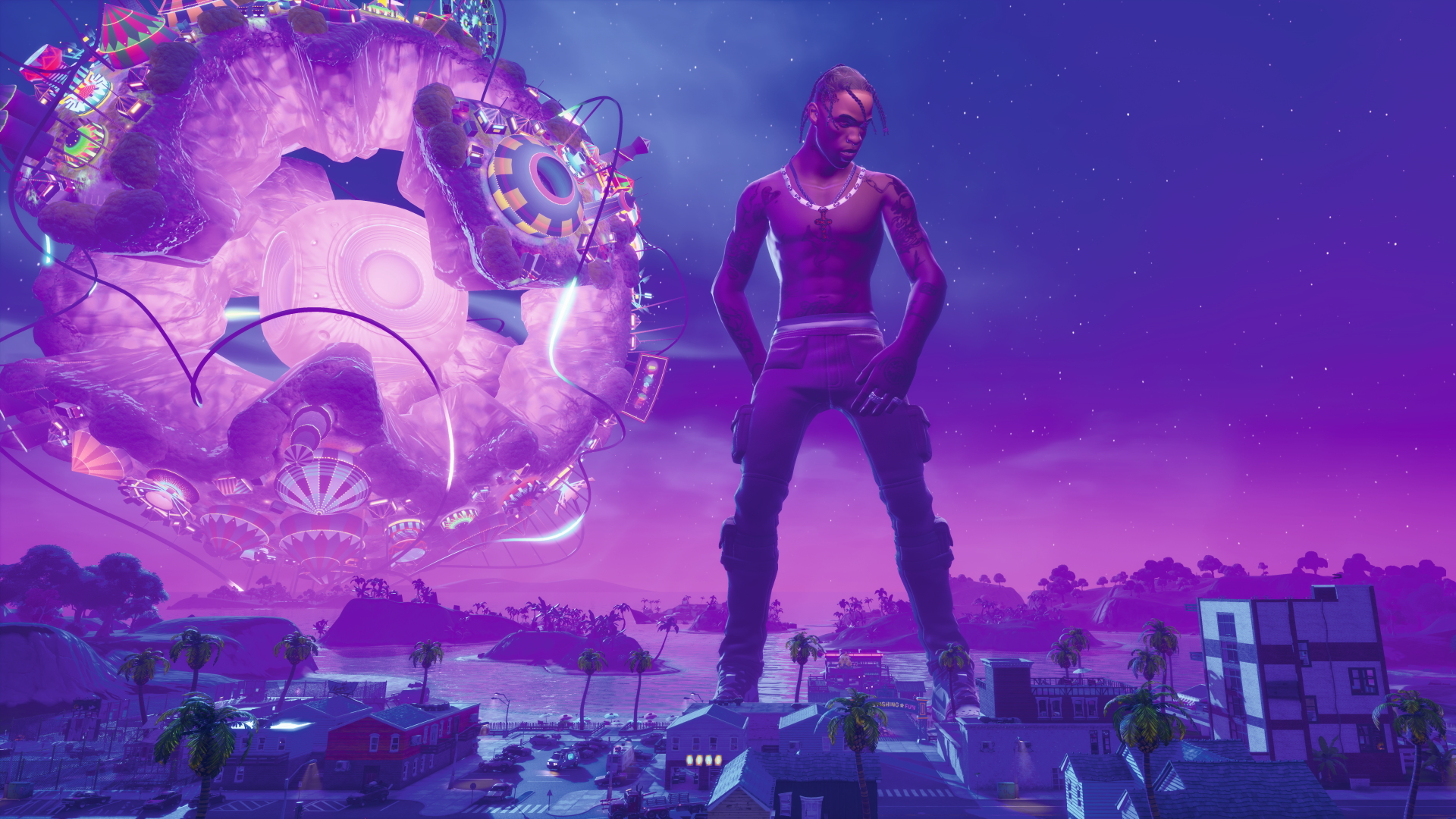
Grand Theft Auto's music licenses have long blown the competition away, something underscored by the fact Dr Dre released six new tracks exclusively in GTA Online. With half an eye on GTA 6, how Rockstar matches the spectacle of Fortnite – both through its star-studded crossovers and ever-intriguing and evolving map – will be very interesting indeed. Could you imagine the fluidity of Fortnite's evolving map but streamlined within a more serious, more realistic framework? Coachella-like music festivals on Vespucci Beach that only feature in the summer months; sports events that include Superbowl-aping performances from Dre or Ariana Grande; or official, formalised variations of the alien costume craze that swept Los Santos a couple of years back. GTA Online is likely hamstrung by its vanilla server capacity of just 32 players, but what we're seeing in the unofficial roleplay space – as many as 1,000 players currently – bodes well for the future.
I realise I'm starting to sound like Web 3.0-nut heralding the metaverse as the future here, but I suppose that's the point: from Animal Crossing talk shows to The Sims Sessions, Dre Dre in Los Santos, and Travis Scott on the island, we've already got this in video games. It took me stepping away from Fortnite to realise how impressive it really is, and while I've been refinding my feet on a simultaneously familiar and unrecognisable map, I can't help but wonder who'll challenge its foothold in the video game live event space in the, hopefully, not too distant future.
Want to play games like Fortnite? Follow that link for similarly lovely live-service sprawls.

Joe Donnelly is a sports editor from Glasgow and former features editor at GamesRadar+. A mental health advocate, Joe has written about video games and mental health for The Guardian, New Statesman, VICE, PC Gamer and many more, and believes the interactive nature of video games makes them uniquely placed to educate and inform. His book Checkpoint considers the complex intersections of video games and mental health, and was shortlisted for Scotland's National Book of the Year for non-fiction in 2021. As familiar with the streets of Los Santos as he is the west of Scotland, Joe can often be found living his best and worst lives in GTA Online and its PC role-playing scene.
